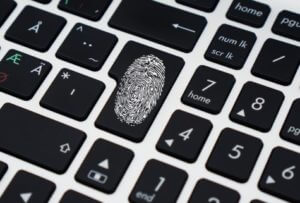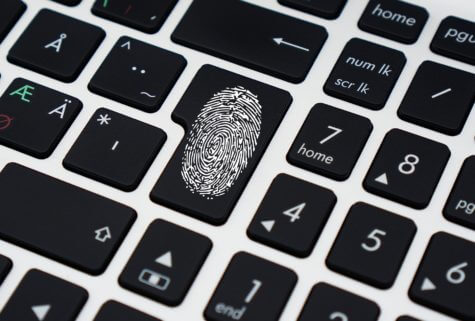PITTSBURGH — Beginning as early as 1920, and perhaps even earlier, fingerprint evidence has been used to convict people of capital crimes, including murder. Long jail sentences and even executions have been carried out based on a suspect’s prints lifted from a crime scene. But a controversial new study that examines the reliability of such evidence has called into serious question the ability for fingerprint evidence to be conclusive.
The study by an American Association for the Advancement of Science working group says the argument that fingerprints can only possibly belong to a single person is not scientifically defensible.

“Fingerprinting is one of the most heavily used forensic methods. Routinely, fingerprint analysts report and testify to ‘identification,’ that is, that the person who left the mark at the crime scene is the same person whose fingerprint is in the database,” says one of the study’s investigators Joseph Kadane, a professor of statistics and social sciences at Carnegie Mellon University, in a CMU press release. “Our review of the scientific literature found that there is no scientific way to estimate the number of people in some community — a city, a state, the country, the world — who share the characteristics found, and hence no scientific basis for identification.”
The startling report concludes that there is simply insufficient data to know how unique a set of fingerprint features really are. The researchers believe their findings mean it would be “scientifically baseless to claim that an analysis has enabled examiners to narrow the pool of sources to a single person,” according to the release.
In the report, they note these findings add to an important 2009 National Research Council report which finds “most forensic disciplines have not been subjected to rigorous scientific study.”
In that report the authors note that recent advances in forensic science have identified perpetrators that would have previously gone free. However, those advances “also have revealed that, in some cases, substantive information and testimony based on faulty forensic science analyses may have contributed to wrongful convictions of innocent people.”
Prompted by this, the AAAS researchers say they worked to meet the need to take a more detailed scientific look at the general issues with fingerprinting that the NRC report raised.
Among the 14 recommendations that came out of their in-depth investigation, they say there is a need for further research on how well “print examiners can assess intra-finger variability – that is, the degree to which prints may be changed due to distortion.”
They also said there was need for better procedures for keeping print examiners from being influenced by outside knowledge of the case in their analysis.
“Studies have shown that latent print examiners (like all human beings) are vulnerable to
contextual bias,” the authors write in the report. “Their evaluations of the features of latent prints can be influenced inappropriately by premature exposure to reference prints; their conclusions can also be influenced inappropriately by information about the underlying criminal investigation.”
In addition to providing such recommendations, the authors also say they hope their report will help judges in their obligation to be “gatekeepers” as they work to separate good science from dubious science.
Outside of the forensics world, the uniqueness of fingerprints has been in tech news following a recent switch by Apple from fingerprint based phone unlocking to face scans. Apple says the face scans are more secure than touch-ID, which they say has a 1 in 50,000 chance of being unlocked by someone else’s print.
The full report on fingerprints in forensics was recently made available online via the AAAS website.

I am a retired fingerprint examiner. I have worked with latents that were severely distorted by the surface on which they were found, but it was still possible to match them with rolled prints. However, I am extremely concerned by the fact that some jurisdictions are accepting fingerprint matches on the basis of only eight points of similarity.
A deputy sheriff in another county once brought me a lifted latent fingerprint and the card he was comparing it to. He told me he was baffled by whether or not it was an ident. I studied it and found that, starting from the core and moving out in every direction, the prints were identical. This added up to eight points. But from there on out it was completely obvious that they were not from the same person. There were NO points of similarity from there on out. He did not have an ident.
I have gone to court a few times on twelve points, but I prefer at least sixteen with NO areas where there were minutia that weren’t the same. Even one non-matching point of minutia is sufficient to rule out an ident. I stand by the use of fingerprint identification, which is often the only thing that can possibly hitch the latents and the perp together. You don’t get DNA in many burglaries! But the examiner must have a good mind ‘and good vision, along with the willingness to say, “Yep, yep, yep, this is looking good, oops, no, this is not right.” Back to the comparisons, because this suspect is now ruled out.
If the willingness to “back up five yards and punt,” as my superior used to say, is lacking, there are going to be errors. This is why a person cannot be certified without at least two years of having every ident checked by an examiner who is already certified.
And yes, fingerprints can be forged. Pat Wertheim, who was my subordinate when I worked in the Plano, Texas, PD, gave the clinching testimony in the trial of a man accused of forging a fingerprint. No two fingerprints are ever exactly the same, because the person will be holding his or her hand in different positions at different times, will have more or less pressure on some areas, perhaps seriously distorted by being on a wet surface. The minutia will be the same but they might look slightly different. But if two prints seem totally identical, at least one of them is a forgery.
I hope this makes sense to someone who is not trained in working with fingerprints. I will be glad to explain in more detail to a person working on this study.
.